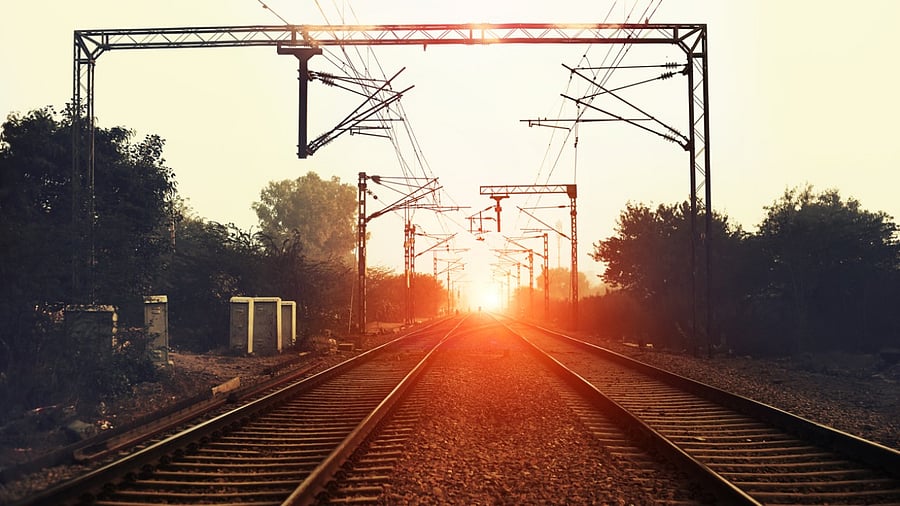
Direct supply of solar energy to Indian Railway lines - without the need to connect via the grid - would save almost 7 millions tons of carbon a year besides powering at least one in four trains on the national network, according to a new study by Indian NGO Climate Trends and UK-based green tech start-up Riding Sunbeams.
According to the Indian Railways 2019-2020 annual reportm there was passenger traffic of over 8 billion passengers in that period, which would mean that 2 billion passengers could be travelling on trains directly powered by solar energy.
It may be mentioned that Prime Minister Narendra Modi recently announced that the electrification of railways in India is progressing fast, and that the target is for Indian Railways to be a net-zero carbon emitter by 2030.
Railway Minister Piyush Goyal has issued a directive to Indian Railways to earmark huge areas of unproductive land for solar development as part of the company’s Net Zero commitment.
Plans are already underway to deliver 20GW of solar generation to match growing demand for energy to move trains.
The new analysis highlights that around a quarter of this new solar capacity - up to 5,272 MW - could be fed directly into the railway’s overhead lines instead of being procured over the electricity networks, reducing energy losses and saving money for the rail operator.
The researchers found that substituting energy supplied from the coal-dominated grid for private-wire supply from solar could also rapidly cut emissions by as much as 6.8 million tons CO2 each year - just over the entire annual emissions of Kanpur.
Riding Sunbeams founder and director of innovation Leo Murray and Director at Climate Trends Aarti Khosla have co-authored the report.
“Right now India is leading the world on two vital climate frontiers - rail electrification and solar power deployment. Our analysis shows that connecting these two keystone low-carbon technologies together in Indian Railways can drive both India’s economic recovery from the Covid pandemic and its efforts to transition off fossil fuels to tackle the climate crisis,” said Murray.
“There has been analysis that converting all diesel locomotives to electric will indeed increase the emissions in the short term, however, this report shows the tremendous opportunity of doing it right the first time, by creating a direct connection of the locomotive system to solar PV installations, meeting more than a quarter of the total demand,” added Khosla.
Dr Ajay Mathur, Director General, International Solar Alliance, said: "India's energy and transport sectors contributed more than 65% of India's overall emissions in 2014, and the country's ambitious renewable energy targets have put the power sector on a decarbonisation pathway. Indian Railways' goal of net zero emissions by 2030 could see over 8 billion passengers travelling emissions free every year after that.”
Arunabha Ghosh, Chief Executive Officer, Council on Energy, Environment and Water, said: “Building on the ambitious goal for 100% electrification of the Railways, it would be logical to embrace and scale up solar and wind for our railways to reach net-zero emissions by 2030. In the immediate run, the Railways could focus on greening their electrification system and substations. Installing rooftop systems on station buildings and workshops could also result in significant cost savings. In the long term, green hydrogen is another promising option to power the trains."
